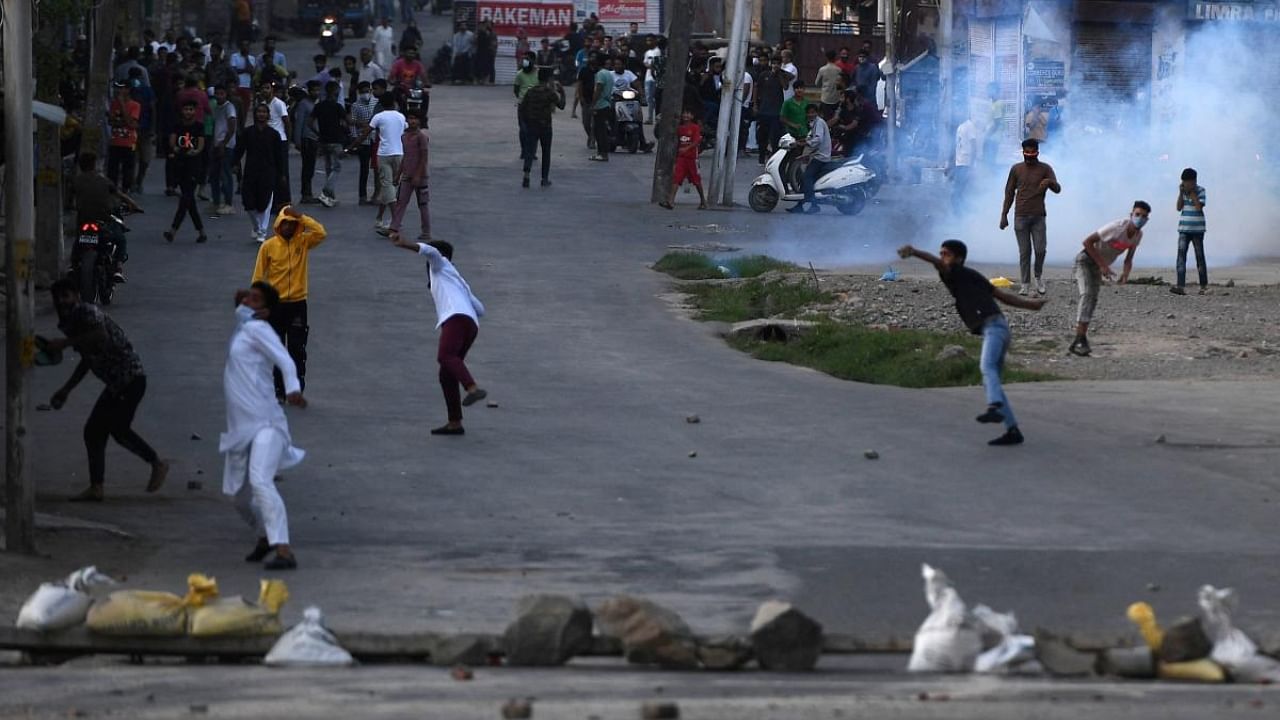
Though stone pelting in Kashmir may have ebbed in recent years, a recent study has revealed that even boys as young as 11 years were found involved in such incidents till 2020.
A study ‘children in conflict with law’ published in University of Kashmir’s Journal of Society reveals that 60 per cent of the juveniles, who were caught by the law enforcing agencies from the beginning of 2018 till the end of 2020, were in the age group of 14 to 16-years while 33 per cent were above 17 and below 18-years.
The study conducted by Dr Asima Hassan, a member of Juvenile Justice Board (JJB) Srinagar also states that 41 per cent juvenile stone pelters belonged to poor families whose income was less than Rs 10 thousands per month while 31 per cent were from families with less than Rs 20 thousand per month income.
According to the study none of the juveniles apprehended by the police on stone pelting charges were illiterate as at least all of them had been to school.
“19 per cent had studied in school upto primary level while 12 per cent continued till middle level. 29 per cent among them had studied up to 10th class while only 18 per cent were either studying in 12th class or had studied up to 12th. 22 per cent of the juveniles had completed their 12th and were in college as despite being detained for stone pelting charges, they had not discontinued their studies,” it said.
74 per cent of the juveniles in conflict with the law belonged to nuclear families which clearly suggests loose parental control on them.
“While carrying the study, it was analyzed that these young boys do not fear the law and do not fear guns as they were immature to understand such issues. They do not even care for their lives or others lives,” Dr Asima told DH.
She said as it has been reported widely in the media over the years that not only most of the people who become militants in Kashmir, but stone-pelters too were from lower socio-economic backgrounds.
Also Read: J&K launches GPS-based teachers' attendance app, to seek student feedback on their performance
In 7 per cent cases, the juvenile offender had a case registered in heinous crime which includes section 302 (murder) of Indian Penal Code (IPC).
“Majority of the respondents were booked under serious offence category which includes section 307 (attempt to murder), section 146, 147, 148 of IPC (rioting, armed with deadly weapon) and section 336 of IPC (to endanger human life or the personal safety of others). 22 percent juvenile offenders had cases registered under petty crimes which include section 147 and 336 of the IPC,” the study reveals.
It also brought to the fore that 35 per cent of juvenile stone-pelters either had links with separatists or militants. A mere five percent of the respondents in the study said that police behaved well with them during their detention while a huge majority had a bad experience with the police.
55 per cent of the respondents said that their experience with the police during their detention was bad, 40 per cent said they had to face terrible time with the police, the study concludes.
The findings of the study stumbled across during the fieldwork was that stone pelting started as a violent protest against repression and poor socio-political conditions in the Valley but, it has gradually turned into social practice, Dr Asima added.